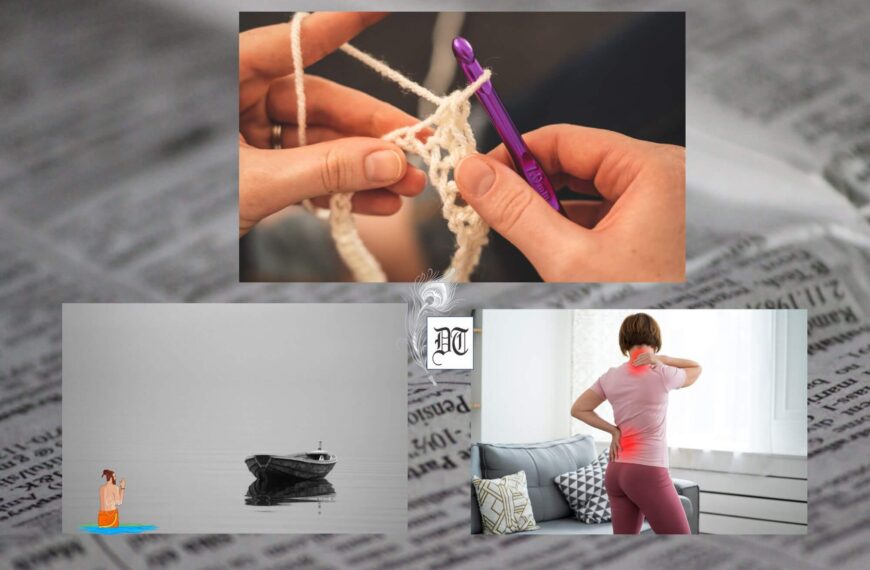Broadly, ‘mindfulness’ defines any sort of meditation. Vipassana means ‘to see things as they really are’. It is a logical process through self-observation. This form of meditation was discovered by Gautam Buddha, more than 2500 years ago. For several years, he used to heal people through simply Vipassana meditation. Navodita unravels the secrets of Vipassana, in the weekly column, exclusively in Different Truths.
Meditation is the underlying philosophy of Hindu ritualism, puja, and prayer. It is the deep-seated idea behind knowing oneself and drawing inward in that quest. In this one withdraws one’s senses and mind from distractions and contemplates on the chosen subject of concentration. It brings harmony within the body and the mind. With the help of meditation, you can overcome your mental blocks, negative thinking, fears, restlessness, and anxiety.
There are several kinds of meditation, few of them are Vipassana, Tantric, Transcendental, Kundalini, and Zen. Let’s discuss the Vipassana meditative technique today. Broadly, ‘mindfulness’ defines any sort of meditation. Vipassana means ‘to see things as they really are’. It is a logical process through self-observation. This form of meditation was discovered by Gautam Buddha, more than 2500 years ago. For several years, he used to heal people through simply Vipassana meditation. Such practitioners usually maintain no contact with the outside world refraining from any sort of reading, writing, religious practice or daily routine. They follow a demanding daily schedule of at least ten to twelve hours of sitting meditation daily.
It is suggested that for meditation a quiet place should be chosen, either under a tree or in a room. The meditator should sit quietly with legs crossed. Close eyes. Then pay attention to the belly. Breathe normally. The mind should be attentive to the entirety of each process. Maintain a steady attention through the beginning and end of the rising. One has to be aware of the sensations of the abdomen. Pay attention to the whole process, which has a beginning, middle and the end. The abdomen is supposed to rise in the beginning when you breathe in and fall when you exhale. Focus on the rising and the falling for some time. Then watch the mind and be aware that you are thinking.
While sitting in meditation, if you lose concentration, you should focus on the object causing the distraction. For some time take your attention away from the abdomen and its rising and falling, and focus on the object. Be aware and conscious about it. If and when the sound of distraction fades, again get your attention back to the abdomen. This is the simple way of doing sitting meditation. You should also note sensations in the body as and when they arise- warmth, pressure, hardness or motion. Similarly, whenever there is a mental distraction related to thinking, imagining, planning, visualizing and memorizing, it must be taken care of, too. Each time a distraction comes up, be careful to think of a verbal label which defines the distraction. This just helps give a quality to the distraction without getting absorbed into its content. The label maybe words like ‘seeing’ for a visual distraction, ‘hearing’ for a noise distraction and ‘smelling’, and so on. This direct awareness about the various distraction helps you get a good hold of your thinking and mental processes.
 Lastly, revise the label of ‘intending’, ‘opening’ for wanting to open your eyes. Continue to note it carefully and precisely until the moment you have stood up and start walking. This form of meditation is done not only just sitting down but can be done throughout the day. While walking, brushing your teeth, wearing your clothes, eating meals be aware and mindful. All these activities may be noted with consciousness and with a label.
Lastly, revise the label of ‘intending’, ‘opening’ for wanting to open your eyes. Continue to note it carefully and precisely until the moment you have stood up and start walking. This form of meditation is done not only just sitting down but can be done throughout the day. While walking, brushing your teeth, wearing your clothes, eating meals be aware and mindful. All these activities may be noted with consciousness and with a label.
This form of meditation can also be done walking. Be mindful and aware of your body and the Self while taking a stroll in the garden, terrace or by the beach or even in the park. You should choose a lane of about twenty steps and slowly walk back and forth along it. A walking meditation assists in keeping the focus when you do the sitting one after ten minutes. If you are walking rapidly, you should notice the placing of the feet and label ‘left’, ‘right’, etc. While doing slow walking, just notice the lifting, moving and placing of each foot. When you walk, the sensation should be felt through your body. The main sensations to note in walking meditation are lifting, placing and movement and be conscious of each one. In ‘lifting’, for example, be aware of the downward movement of the foot. If our effort to be aware of the lifting process is too strong, it will overshoot the sensation. The sensation, thus, has to be balanced. Thus in each effort and movement, just precise and exact awareness is the key to a good focus, neither too much, nor too little.
Meditation has to be done with insight and concentration. ‘Insight’ is a mental factor and gets better with the quality of consciousness. The nearer insight comes, the clearer the true nature of the lifting process can be seen. Insight is accompanied by physical and awareness sensations that go deep down into the mental consciousness. The insight into cause and effect can take a great variety of forms. Mere observance of the phenomenon of ‘lifting’ for example in walking takes you to a deeper level of concentration. There is no one behind what is happening; the phenomena arise and pass away as an empty process; according to the law of cause and effect. The illusion of movement and solidity is like that in a movie.
the quality of consciousness. The nearer insight comes, the clearer the true nature of the lifting process can be seen. Insight is accompanied by physical and awareness sensations that go deep down into the mental consciousness. The insight into cause and effect can take a great variety of forms. Mere observance of the phenomenon of ‘lifting’ for example in walking takes you to a deeper level of concentration. There is no one behind what is happening; the phenomena arise and pass away as an empty process; according to the law of cause and effect. The illusion of movement and solidity is like that in a movie.
Thus it becomes important to practice such mindful meditation couple of times a week, if not every day. Next time, we will be back with more meditative techniques.
©Navodita Pande
Photos from the Internet
#Yoga #HolisticHealth #YogaTechniques #Meditation #MeditativeTechniques #Vipassana #DifferentTruths





 By
By
 By
By

 By
By